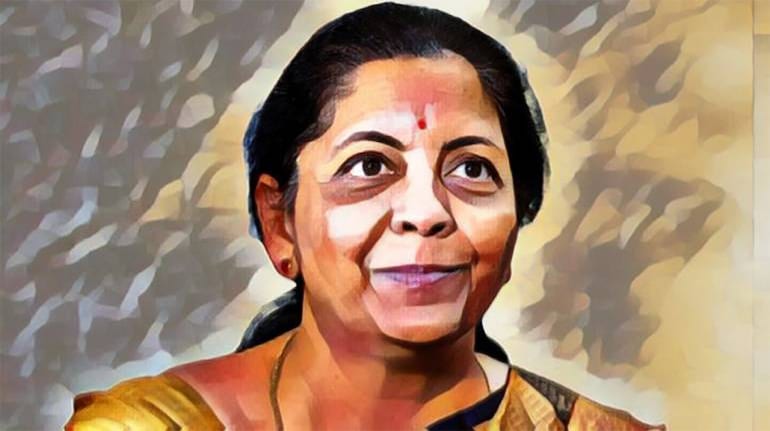



The central government announced on June 28 that it would formulate a new public-private partnership (PPP) policy to improve the ease of doing business by cutting red tape and reduce the number of clearances.
In the 2021-22 Budget speech, Finance Minister Nirmala Sitharaman had announced that monetising operating public infrastructure assets is a very important financing option for new construction.
The PPP model has delivered mixed results in India on account of overextended balance sheets, contract disputes, land acquisition problems, and lack of a dispute-resolution mechanism.
However, the government is extremely confident about the PPP model because of its success in the airports, roads, and railway sectors.
But what are the issues the government will need to address in its new PPP policy?
Regulatory Approvals for ProjectsIndia is a federal state where land is a common subject for the central and state governments.
While most PPP projects in India are awarded by the central government or by a regulatory body under the central government, projects are implemented in the jurisdiction of state governments.
The key execution challenges during construction project developers face include acquisition of land and right of way, securing necessary clearances, and financial closure, market experts and analysts said.
"The two biggest issues the government currently faces are land acquisition-related challenges because of the procedural delays involved and the compensation involved in buying the land," said ICRA's Rajeshwas Burla.
Burla said in many road PPP projects, the delay between the project being awarded and the actual date for construction to start ranges 9 to 15 months.
As per most PPP concession agreements in India, it is the responsibility of the government authority to hand over the required land and right of way to the concessionaire, failure of which resulted in the time and cost overrun of the projects.
But there have been cases where state authorities did not act proactively to make available land or resolved land-related issues.
As observed in the case of Mumbai metro rail and national highway projects, the concessionaire received delayed Right of Way to complete the construction work.
Further, most PPP projects in India are still awarded after two layers of approvals from a Standing Finance Committee and the Public-Private Partnership Appraisal Committee.
Projects that are bigger than Rs 1,000 crore also require the approval of the Union Cabinet, which delays them further.
PPP projects that involve government funding in the form of viability gap funding are further delayed due to regulatory approvals.
"If viability-gap funding is needed, then the projects go through an additional layer of scrutiny, as the government needs to invest in the project, this causes a delay in awarding projects," CRISIL's Jagannarayan Padmanabhan said.
Environment and social considerations are also important but more critical in these projects. In certain cases, these issues can become very complicated and politically challenging.
For instance, in the development of the Mumbai Metro, about 800 acres of land in Mumbai's Aarey was declared a reserve forest, and the project developer, Reliance Infra, was forced to shift their plans to construct a car shed elsewhere.
Changes in the PPP model during executionGiven the long-term nature of these projects, it is difficult to identify all possible contingencies and issues that may come up during project development but were not anticipated by the parties when the contract was signed.
It is also possible that some of the projects may fail or may be terminated prior to the projected term of the project, for reasons including changes in government policy, failure by the private operator or the government to perform their obligations, or due to external circumstances.
A number of road operators in India have found actual traffic lower than the government’s projection.
"The major risk observed in the case of most of the failed road projects is lower-than-expected traffic growth and in turn, subdued toll/fee collections during the operation phase. The unrealistic traffic projections during the pre-bid stage phase of the project were the cause of this debacle," a market expert said
The GMR Ambala Chandigarh Expressways Pvt Ltd and L&T Halol Shamlaji Tollway Ltd are examples of such projects where actual traffic has been much lower than the government's projected traffic.
Control on pricing/returns from the PPP projectPPP projects have usually been a success in economic infrastructure projects in India, such as airports and toll roads. However, they have faced problems in social infrastructure such as water supply, solid waste management, health, and education, these projects have taken a hit.
"Private firms will also want to know that the rules of the game are to be respected by the government as regards undertakings to increase tariffs/fair regulation, etc. The private sector will also expect a significant level of control over operations if it is to accept significant risks," the World Bank said in a report.
The electricity tariffs in Delhi and Mumbai are examples of such cases where private partners are subject to tariffs set by the respective state governments.
In most PPP projects citizens will continue to hold the government accountable for the quality of utility services and the government will also need to retain sufficient expertise, to be able to understand the PPP arrangements, to carry out its own obligations under the PPP agreement and to monitor the performance of the private sector and enforce its obligations.
"Private sector will do what it is paid to do and no more than that – therefore incentives and performance requirements need to be clearly set out in the contract," the World Bank said.
Discover the latest Business News, Sensex, and Nifty updates. Obtain Personal Finance insights, tax queries, and expert opinions on Moneycontrol or download the Moneycontrol App to stay updated!
Find the best of Al News in one place, specially curated for you every weekend.
Stay on top of the latest tech trends and biggest startup news.